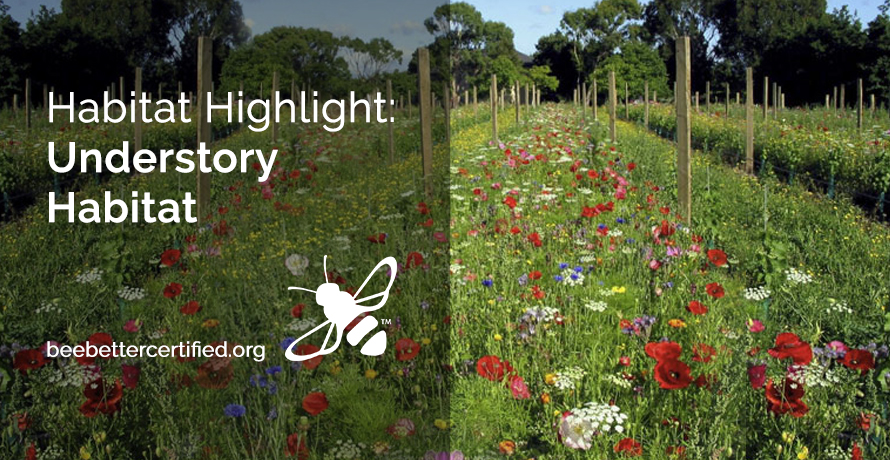Understory habitat refers to areas that can support flowering plants and grasses beneath or between existing crops such as berries, grapes or orchard fruits. Understory habitat helps bring pollination and pest control services directly in amongst crops where they can provide the most benefit. Understory crops can also aid in weed suppression, erosion control, and nutrient management; they may reduce the need for pesticides or managed pollinators.
Permanent understory habitat is best suited to crops where risk of exposure to pesticides is minimal and where such habitat will not impede production or harvest. Temporary habitat can be customized to provide blooms before pesticides are applied. By using plants that bloom early and re-seed vigorously, temporary habitat may only need to be re-seeded every 4-5 years.
From the Field: Klickitat Canyon Winery, an insecticide-free organic winery in the Columbia River Gorge in Washington, has incorporated native prairie into the understory of their vineyard. The conservation value of this understory habitat is hard to overstate: native prairies are a rare ecosystem, with most of them converted to agriculture over the past 50 years. The perennial grasses and wildflowers provide flowers, nesting habitat and serve as host plants to butterflies while also providing pest control services within the vineyard.

Klickitat Canyon Winery in Lyle, WA employs many sustainable, organic, and biodynamic principles on their vineyard – so adding understory habitat was a natural fit for their operation. Colorful lupines are butterfly host plants and provide nectar for a variety of pollinators. Photo: Klickitat Canyon Winery
Where to plant: Between rows in orchard or perennial crops.
Services provided: Pollination; Pest Control; Erosion Control; Aesthetics; Educational Resource.
Additional information: Farming with Beneficial Insects.

